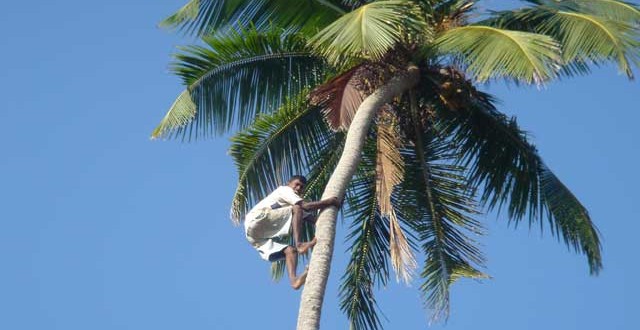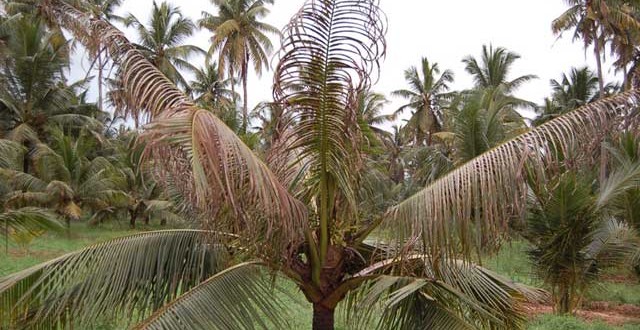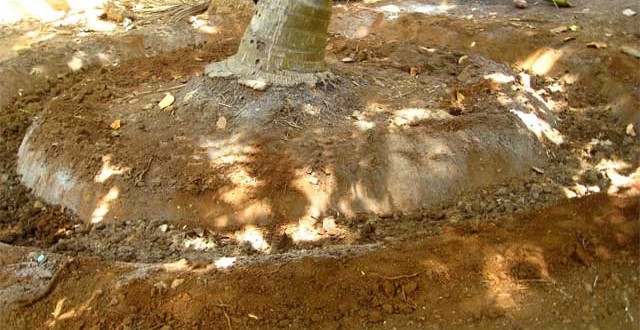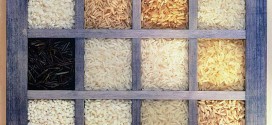New Varieties of Crops suited for Kerala RICE Varsha Duration 115-120 days (Kharif). 105-110 days (Rabi and Summer) Yield Grain – 3787 kg/ha Straw – 6835 kg/ha Characters Photoperiod insensitive, non-lodging, mid early variety resistant to WBPH and moderately resistant to blue beetles. Low susceptibility to blast and sheath blight under field conditions. Kernel red. long bolo and non-glutinous. Recommended for double crop wet lands of Palakkad and Thrissur. Dhanu Duration 159 days. Yield Grain – 3750 kg/ha Straw – 7188 Kg/ha Characters Photosensitive, Semitall, late maturing variety suitable for second crop season in Onattukara region. Withstand flood and drought conditions. Tolerant to stemborer, moderately tolerant to sheath blight, brown leaf spot, Red Kernel, Resistant to shattering. Chingam Duration 98 days. Yield Grain 3910 kg/ha Characters Non-photosensitive, Semitall, non lodging, early variety suitable for dry sowing in Onattukara region for Virippu season. Moderately tolerant to shealth blight and brown leaf spot. Tolerant to stemborer. Kernel red. Kunjukunju Varna Duration 110-115 days. Yield High Yield Potential Characters Photoperiod insensitive, early maturing, red rice variety. moderately tolerant to major pests like gall fly,leaf folder, whorlmaggot and stemborer. Moderately resistant to blast and moderately susceptible to shealth blight. Non-lodging, non-shattering and responsive to fertilizer. Suitable for double cropped areas of Palakkad, Thrissur and Ernakulam. Kunjukunju Priya Duration 105-110 days Yield High Yield Potential Characters Early maturing red rice. Non-lodging, non-shattering and fertilizer responsive. Moderately resistant to blast. Moderately susceptible to shealth blight. Moderately tolerant to major pests like gall fly, leaf folder, whorl maggot and stem borer. Suitable for double cropped areas of Palakkad, Thrissur and Ernakulam. Gouri Duration 115-120 days. Yield High Yield Potential Characters Medium tillering, dwarf, non-lodging medium duration variety moderately resistant to major diseases and pests. Kernel medium bold and red. Recommended for Kuttanad and Kole regions of Kerala. …
Read More »Crops
Fertilizer
FERTILIZER RECOMMENDATION FOR MAJOR CROPS N P K PADDY (kg/ha) Upland(Modan) PTB 28,29 and 30 High-yielding short duration varieties 40 60 20 30 30 30 Wet land (All regions) High-yielding short duration varieties High-yielding medium duration varieties Local varieties H4 Mashuri 70 90 40 70 50 35 45 20 45 25 35 45 20 45 25 COCONUT (Adult palm)kg/palm/annum. General recommendation (a) Average management (b) Good Management (c) For reclaimed clayey soils (as in Kuttanad) 0.34 0.50 0.25 0.17 0.32 0.35 0.68 1.20 0.90 Hybrid and high yielding palm (a) For irrigated areas (b) Rainfed 1.00 0.50 0.50 0.32 2.00 1.20 RUBBER From 1st year to 4th year :-10:10:4:1.5 NPK Mg mixture at the following rates: 3rd Month 225g / plant 9th Month 450g / plant 15th Month 450g / plant 21st Month 550g / plant 27th Month 550g / plant 33rd Month 450g / plant 39th Month 450g / plant From 5th year till tapping begins 12:12:12 NPK Mixture @ 125 kg /ha during April – May and September – October (Where mulching was practiced during initial years) 15:10:6 NPK Mixture @ 200 kg /ha during April – May and September – October (Where mulching was not practiced during initial years) Mature Rubber under tapping 10:10:10 NPK Mixture @ 300 kg /ha or 900 g / plant March -April or 15:15:15 NPK Mixture @ 200 kg /ha or 17:17:17 NPK Mixture @ 175 kg /ha or 19:19:19 NPK Mixture @ 160 kg /ha N P K TAPIOCA (kg per hectare) H.97, H.226 75 75 75 H.165, H.1687, H.2304 100 100 100 M4 and Local 50 50 50 SWEET POTATO (kg/ha ) 75 50 75 SESAMUM (kg/ha ) 30 15 30 GROUNDNUT (kg/ha ) 10 75 75 BANANA (g/plant) Nendran (irrigated ) 190 115 …
Read More »Irrigation and Cropping Pattern
Around 22% of the total cropped area which comes to around 0.65 m ha. is the irrigated area in Kerala. About 90% of total irrigation water is used for food crops of which 80% on rice and 10% on other food crops: A number of irrigation projects have been taken up in Kerala. When all the ongoing and envisaged projects are completed, it is expected to benefit about 0.2 m hectares. Since population is high, area of cultivation is proportionately high compared to geographical area of the state. Now-a-days, the state has developed commercial agriculture more than food crops. According to 1992-93 survey, out of 30.211akh hectares, the share of food crops (cereals, millets, pulses and tapioca) was only 23 percent. A wide variety of crops preferring cool; humid climate are cultivated. Kerala has unique cropping pattern. It accounts for 92% of India’s rubber production, 70% of coconut, 60%’of tapioca and almost 100% of lemon grass oil. Rubber, coconut and tapioca are grown in low elevation under humid-tropical conditions. Crops like tea, coffee, cardomom are cultivated in highlands. The crops like banana, pepper, ginger, tapioca, rubber are grown in midlands. Kerala is the single largest producer of banana also. It holds monopoly with regard to rubber and pepper. Besides the commercial crops like rubber, tea, coffee, pepper, cashew, rice is the important crop of the state as a staple food of the people. It occupies nearly 30% of the total cropped area followed by coconut 25% and tapioca 10 percent. Rubber occupies an area of 4,37,100 hectares, tea around 34, 700 hectares coffee and cardamom 39,930 hectares as per 1992-93 survey. Refer table 2 for more details. Table 1 : Important crops grown in Kerala Sl.No Name of crop Area (thousand hectares) 1 Rice 807 2 Coconut 667 3 Areca …
Read More » Karshika Keralam – A site for Agricultural Enthusiasts
Karshika Keralam – A site for Agricultural Enthusiasts



